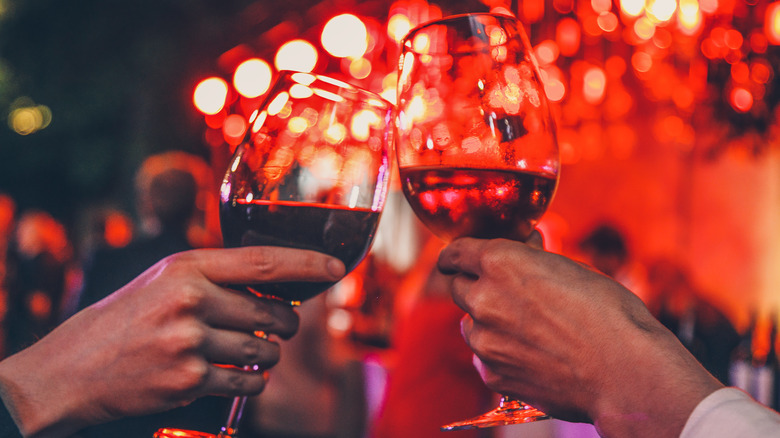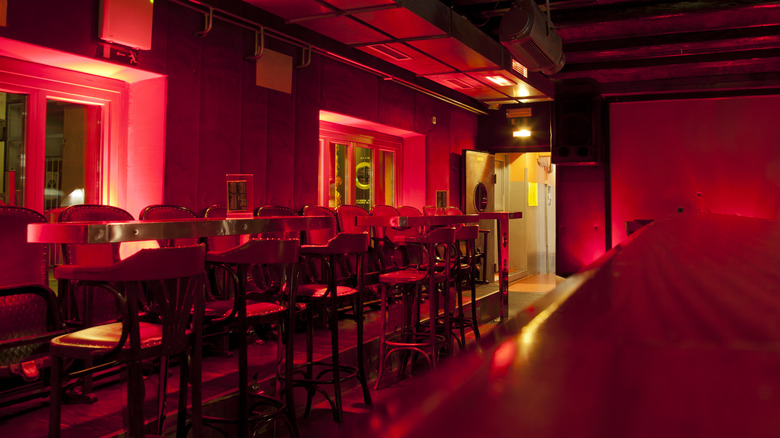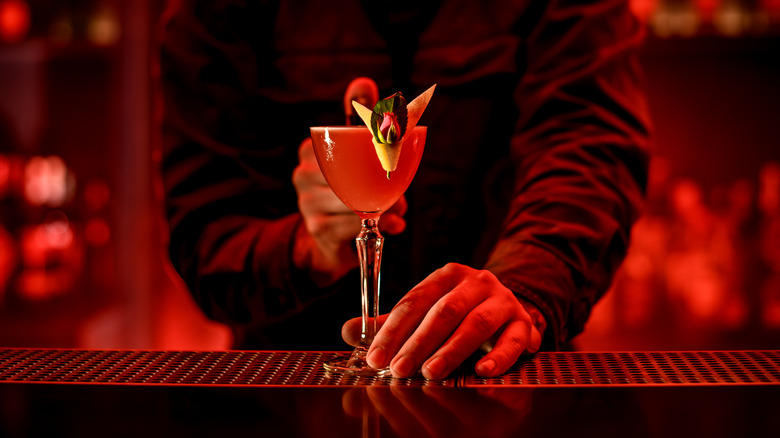The Reason Restaurants Use Red Light To Amplify The Dining Experience
One of the best parts of finding a new favorite restaurant, besides the culinary experience itself, is undeniably the vibes, especially for a special occasion or date night. The concept of mood lighting is not a new thing by any means, but recently there's been an emergence of red lighting in restaurants to totally elevate the ambiance. And the reason it works is not happenstance; psychology provides some answers.
According to lighting manufacturer TCP, The color, placement, and saturation of lighting in a room can certainly impact our moods. For instance, the bright, natural lighting basking through the windows of a neighborhood coffee shop can inspire focus and clarity for occasions like reading a book or working on a project. Softer colors like blue can signal a feeling of serenity as if you were by the ocean.
When it comes to the choice of illumination at dinner spots, it's all about the low, warm lighting — Hello, romantic meals shared over the glow of candlelight! Though the choice of red lights might seem a bit surprising at first glance since the color does hold a few seemingly contrasting associations. The Robb Report says warm tones of the color can actually conjure up a feeling of intimacy and closeness, and even add a hint of excitement to the whole dining experience. Yes, lighting can do that.
The paradoxical color creates a tension of sorts
Everything from boxes of chocolates to wine and bouquets of roses is red on Valentine's Day since the color is synonymous with romance. Besides inspiring loving feelings, the color has also been shown to support well-being by improving sleep patterns; some people keep a red light on their bedside table to help them wind down for the evening.
In a dining context, The New York Times explains that red light can even encourage hunger. At the same time, the element of fire can mean passion, but it can also connote danger. Red can grab our attention (think: traffic signals), or it can symbolize feelings of anger.
As you can tell, the color holds a lot of symbolism and a variety of (at times conflicting) meanings, but restaurant designers have found that using its hue (from amber to maroon) for lighting totally works to build a mood that can hold all of those tensions. Red light is being employed at cocktail bars and speakeasies for this very reason, where it is meant to inspire deep conversations at the table, intimate attention, and maybe even moving a bit closer to your date.
Red lighting can throw off your expectations, in a good way
There's a lot to be said about engaging experiences these days, especially when it comes to the average meal. It feels good to be surprised, to switch things up from the normal dining experience we've known all our lives. To meet this desire, some culinary establishments have even forgone the lighting altogether, with lights-out dining experiences. When you add red light to the mix at restaurants, it can shift your perspective a bit, too.
Plates of housemade pasta or bruschetta may carry an amber hue, and if you are one to never miss taking a photo of your food, the lighting may not lead to as clear visuals as you're used to. Red lights are often used by food companies to conduct sensory analytical testing to reduce the impacts of the food's color on preference and perception.
Red-lit restaurants are generally going for mood-lighting versus Instagram-lighting, which is kind of refreshing. This intentional ambiance helps draw your attention back to the present moment, and the people or person you are with. It's comforting, yet adventurous, and a departure from the norm. Next time you happen upon (or seek out) a restaurant with red light, notice how you feel — and enjoy the ambiance.


